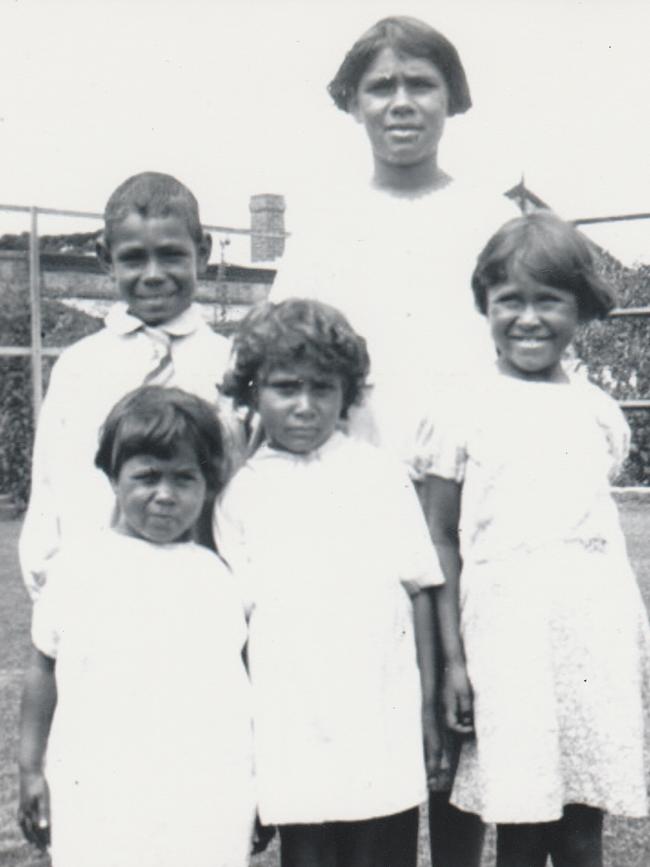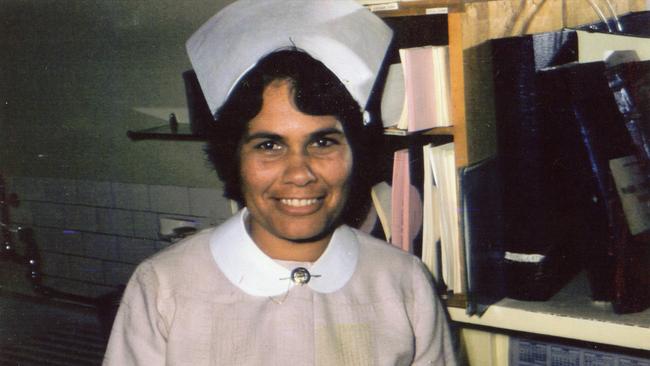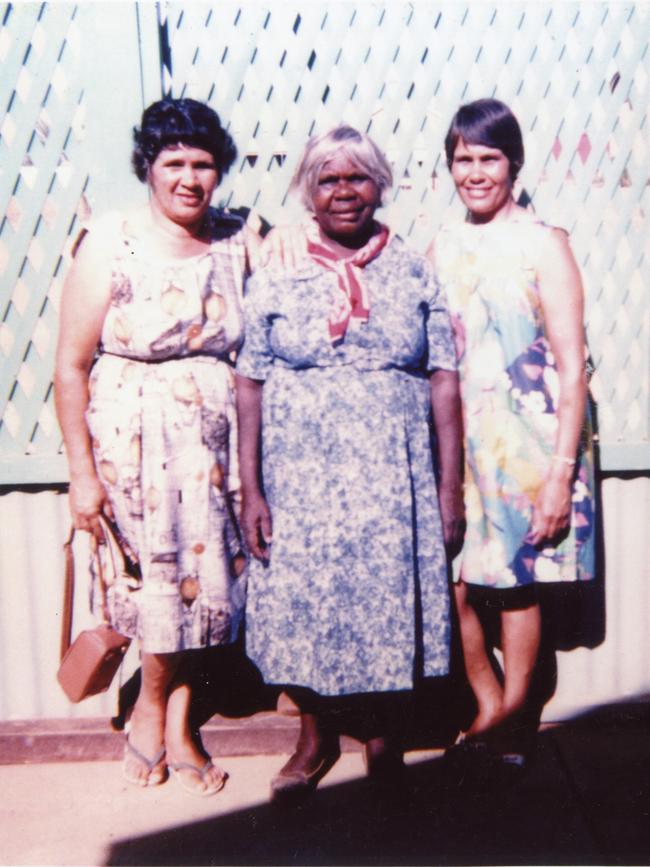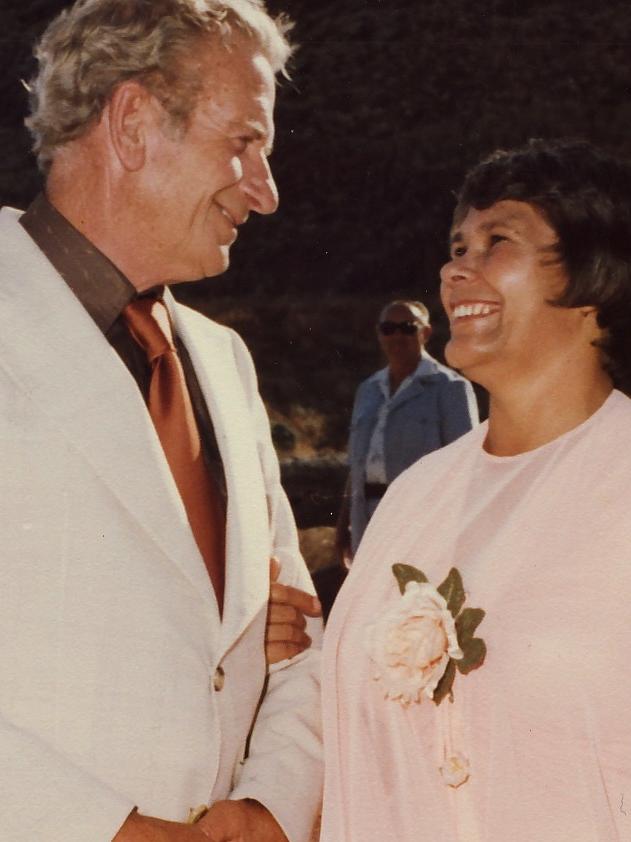Tenacious leader an icon of the Aboriginal rights movement
Lowitja O’Donoghue was two when she was delivered to the missionaries in 1934 with two of her sisters. Their two oldest siblings – a boy and a girl – were already there. It would be 33 years before she was reunited with her mother.

Lowitja O’Donoghue had just turned 18 when she went to the office of the United Aborigines Mission in Adelaide to collect the bulk of her wages as a domestic servant over the past nine months.
It was 1950 and she had been receiving ten shillings a week in her hand and the remainder – one pound a week – was held in trust for her in keeping with the policies of the day. Now she needed it to buy shoes, stockings and uniforms for her new job as a trainee nurse at Victor Harbor.

She was told she could not have any of her money until she turned 21. Instead, the head of the missions office would accompany her to a store to buy her what she needed. “I wasn’t about to subject myself to that,” Dr O’Donoghue recalled in 1994. She left and bought what she could afford with the money she had. She washed her uniform after each shift until she could buy more.
Dr O’Donoghue never went back to the missions office for the wages she earned aged 17 as a cook, cleaner and carer for four children in the home of Joyce and Doug Swincer. She became the first Aboriginal nurse trained at the Royal Adelaide Hospital, then a charge sister and ultimately an icon of the Aboriginal rights movement.
She died peacefully on Kaurna Country in Adelaide on Sunday at the age of 91, with her family by her side.
“Aunty Lowitja dedicated her entire lifetime of work to the rights, health, and wellbeing of Aboriginal and Torres Strait Islander peoples,” Dr O’Donoghue’s family said in a statement. “We thank and honour her for all that she has done – for all the pathways she created, for all the doors she opened, for all the issues she tackled head-on, for all the tables she sat at and for all the arguments she fought and won.”
Dr O’Donoghue’s leadership, tenacity and integrity were her strengths during decades of significant change in Indigenous affairs. She articulated the Yes case for the 1967 referendum, she drove the negotiations for the Native Title legislation that followed the Mabo High Court ruling and she was the inaugural chairperson of the Aboriginal and Torres Strait Islander Commission.
Dr O’Donoghue’s mother was Anangu, a Yankunytjatjara and Pitjantjatjara woman named Lily.

Her father Tom O’Donoghue was an Irish Catholic, a first generation Australian among men who forged into Central Australia to run sheep and cattle. According to Stuart Rintoul’s authorised biography Lowitja published in 2020, Tom was born in South Australia two decades before Federation to free settlers from County Kerry.
At De Rose Hill – the pastoral lease Tom established north of Oodnadatta – he and Lily slept under a bough shed. Between 1924 and 1935 they had six children including Dr O’Donoghue who was born fifth. It was Tom who handed the eldest five children to missionaries at the Colebrook Home for Half Caste Children, Rintoul writes.
Dr O’Donoghue was two when she was delivered to the missionaries in 1934 with two of her sisters.
Their two oldest siblings – a boy and a girl – are already there. She is given the name Lois and the birthdate of August 1, the horse’s birthday. Dr O’Donoghue never spoke to her father again, though she came to believe he was the red-headed Irishman who had been to her work a few times and watched her. Rintoul’s book includes a record of Lily trying to find her children in 1945.
She wrongly thought they were at Port Augusta and went there from William Creek, a distance of almost 600km. It would be 33 years before Dr O’Donoghue was reunited with her mother.
She found her living in a corrugated iron humpy on the outskirts of Oodnadatta. In a 1994 interview for Film Australia, Dr O’Donoghue was asked if she felt angry.
“There really have only ever been a couple of times that I was certainly angry about and have been angry about what happened, not so much to me, but what happened to my mother in not being able to keep her children and more angry about the fact that the missionaries didn’t have the foresight to inform my mother that we were all right and to make contact with her, to let her know that we were all right,” she said.

After 10 years as a nurse, Dr O’Donaghue worked as a welfare officer in Coober Pedy.
Early each weekday morning she collected Aboriginal children from camps and took them to town to wash and feed them before school.
Before long she told the parents what their responsibilities were.
“I said to them, ‘I’m not doing this any more, this is your job’, but I’d work with them to do it,” Dr O’Donoghue told The Age in 1996.
In every household where parents were not getting their children to school, Dr O’Donoghue believed there should be individual case management by education departments as there would be if the family was not Aboriginal.
“Education departments have truancy policies and they are just not implementing them,” she said in 1996. “I know kids who have not been to school for 12 months and the department has done nothing in relation to it, nor have school liaison officers. Why aren’t they in fact dealing with these families and their children? They have a responsibility to do that.”
Almost two decades later, Dr O’Donoghue’s remarks could still apply in some remote towns and communities where fewer than 50 per cent of students attend on any given day. In those early years working for government, Dr O’Donoghue slept in creek beds, carried a gun and shot kangaroos on the way to communities so she could offer food to her hosts. By 1975, she was the Adelaide regional director of the federal department of Aboriginal affairs.
“In working towards Aboriginal objectives,” wrote Stewart Cockburn in The Advertiser, “Miss O’Donoghue’s personal style is low key. She finds it more effective to work her way around obstacles than to try to topple them.” Dr O’Donoghue advanced through the Commonwealth public service at speed.
She got things done with quiet determination and was recognised with a litany of awards.
When Dr O’Donaghue was named Australian of the Year in 1984, she took some criticism for accepting an honour presented on Australia Day. This was mild compared to what was to come. Between 1990 and 1996, Dr O’Donoghue was the inaugural chairperson of the Aboriginal and Torres Strait Islander Commission.
She said the national body was forced to operate in a “climate of criticism”. “Out there in tabloid land, (ATSIC) has become the icon of that mischievous construct ‘the Aboriginal industry’,” she wrote in 1998.
The Howard government commissioned an audit, which Dr O’Donoghue pointed out “uncovered no instances of fraud, but it did discover a system of grant administration that was so detailed as to make breaches of grant conditions almost inevitable”. The resulting report recommended training for administrators of Aboriginal organisations.
Dr O’Donoghue had envisioned ATSIC as a national representative organisation that was primarily advisory with regional assemblies. She described the first three years as “unwieldy and really too difficult to sustain” because ATSIC initially had 60 regional councils and 800 elected representatives.
This was reduced to a more manageable 35 regional councils. Robert Tickner, then minister for Aboriginal affairs, had nothing but praise for her.
“She is a confidante of premiers and prime ministers, and yet is equally comfortable sitting on the ground in a remote Aboriginal community,” he said. Dr O’Donoghue said:
“We have to work towards one Australia. I have a responsibility to bridge the gap between black and white”.
Her conciliatory approach did not appeal to all. At the time Gary Foley, who founded the Canberra tent embassy, called Dr O’Donoghue essentially a servant of the system. Pat O’Shane, then a magistrate, said “she’s always going to play it safe”.
Dr O’Donoghue responded by maintaining an extraordinary work rate. In 1993, she took the lead to draft an agreement that provided a basis for the Native Title Act, working out the implications of the High Court’s Mabo decision.
At the time David Ross, who led what is now the Indigenous Land and Sea Corporation, said Dr O’Donoghue pulled no punches in dealing with then prime minister Paul Keating.
“Keating respects people in return when they deal with him in that manner. If you go in there like a wimp he’s going to chew you up,” Mr Ross said. Mr Keating later described how Dr O’Donoghue saw with great clarity that the High Court had opened a door that could close fast.
She seized the chance to create Native Title laws that would change Australia.
“Only she could do it. She was the chair of ATSIC. This gave her a pulpit to speak from but no overarching authority, much less power,” Mr Keating said at the Lowitja Oration in 2011. “But this is where leadership matters.
She decided, alone decided, that the Aboriginal and Torres Strait Islander peoples of Australia would negotiate – and I emphasise negotiate – with the commonwealth government of Australia and that the negotiations would be the leaders of the Indigenous land councils.
“She decided that. And from that moment, for the first time in the 204-year history of the settled country, its Indigenous people sat in full concert with the government at all.” The resulting laws have given miners a licence to operate that they did not have before. Traditional owners are now partners in business with the world’s biggest resource companies. Indigenous people across Australia have mining and energy projects of their own as a direct result of Native Title deals made possible because of the legislation that Dr O’Donoghue helped to create. It was in the wake of these negotiations that Cape York Partnerships founder Noel Pearson called Dr O’Donoghue the greatest Aboriginal leader of the modern era. Dr O’Donoghue did some of her most intense and complex work in Indigenous affairs while grieving the death of her husband.

She met Gordon Smart while working at a repatriation hospital in Adelaide. He was a World War II veteran and an orderly. Smart was a non-Aboriginal man, 17 years older than her and married with six children when he told her he wanted to marry her. “I indicated to him that he should discharge his responsibilities to his young family and that if, in fact, I was still around and available when his children were off his hands, well then obviously I’d ... I’d be interested,” Dr O’Donoghue said in her Film Australia They married in 1979. In 1991, while Dr O’Donoghue was working in Alice Springs, Smart had a heart attack. She rushed home. He did not recover.
In 1995, she was Mr Keating’s choice for the inaugural president of an Australian republic and many thought she should have been named the first female and Indigenous governor-general.
At the time Naomi Mayers of the NSW Aboriginal Medical Service said: “Lois has got far more class in her little toe than (John) Kerr would ever have had when he was governor-general,” Dr O’Donoghue had an excellent rapport with Mr Keating. But she would not take his job offer. ”I told him, ‘I’m a republican. And so are you,” Dr O’Donoghue told The Australian.
Two years later, on May 27, 1997, then Prime Minister John Howard was speaking at the Australian Reconciliation Convention when Dr O’Donoghue stood up from her chair and turned her back on him.
It was a spontaneous gesture that swept through the crowd. The day before, the historic report into the removal of Aboriginal children, Bringing Them Home, had been tabled in federal parliament. Mr Howard expressed personal sorrow for past injustices but did not support a national apology.
As he explained this, people got on their feet one after another and shunned him.
Writing in The Australian, author Kate Legge said the sight of a mostly Indigenous audience cold-shouldering a rattled PM became a potent symbol of the nation’s soul-searching over reconciliation and what would become known as the Stolen Generations. Dr O’Donoghue had been gone from ATSIC for nine years when the Howard government abolished it in 2005. She left four years before the term of Geoff Clark, the organisation’s third and final chairman who was suspended when Mr Howard told Australians: “We believe very strongly that the experiment in elected representation for indigenous people has been a failure”.
However, there were early challenges for ATSIC when Dr O’Donoghue was at the helm. She was said to have been at loggerheads with her deputy Sol Bellear, who eventually left in 1994, dismissing the organisation as “just another bureaucratic exercise”.
Though the new Aboriginal minister John Herron sang her praises, calling her “a role model for all Australians”, the first Howard-Costello budget slashed about $450 million out of ATSIC. The organisation had two functions that critics believed were incompatible – the administration of programs and the representation of interests.
Reporting in 1991 on the first year of ATSIC, Dr O’Donoghue wrote of an overwhelming sense that people were waiting for the organisation to fail. “To a large extent, Aboriginal and Torres Strait Islander people have now been entrusted with the funds and the programs intended to redress these disadvantages.
It would be a tragedy if this opportunity were wasted,” she wrote. By 2003, she was calling on then chairman Mr Clark to go quickly. She had formed the view that he may not only have imperilled ATSIC, but any future national body.”
I feel he has let himself down. He has let his people down and brought them to a situation where we find we may not have a national voice in the future,” she said at the time. Dr O’Donoghue was reflective and candid in 2005 when she spoke about the consequences of giving financial controls to people who were not trained in administration.
“Money – that was the root of the evil at ATSIC,” she told The Age. “It was always a hard job keeping people on the straight and narrow.
Even on the board level it was just really hard work.”
She left ATSIC at the end of 1996, aged 64, but like many activists, she stayed busy and in public life for another 12 years.
She became patron of the Lowitja Institute, Australia’s National Institute for Aboriginal and Torres Strait Islander Health Research.
Though she respected Queen Elizabeth II, Dr O’Donoghue was a leading figure in the republican movement, suggesting a republic would be a fitting “apology” to her people.
Dr O’Donoghue offered one insight into her success when she said: “I don’t think that one can be effective in life by being angry and bitter.” Instead, she fought with self-discipline. “I’m not trying to promote guilt,” she said in 2007, a year before she retired from public life. “I see guilt as a very destructive emotion. But so is its converse: complacency.”

To join the conversation, please log in. Don't have an account? Register
Join the conversation, you are commenting as Logout